I chose to represent a mixture of course objectives within the cardiovascular system. Both analyzing the evolutionary history of the heart and explaining the structure and function of the heart. “The earliest known heart and blood vessels have been found in an exceptionally well-preserved fossil, revealing that a complex cardiovascular system evolved as early as 520 million years ago” (Dunning, 2014). The heart is the center of the circulatory system, with the crucial role of pumping blood through the pulmonary and systemic systems within the body network. “The circulatory system is a body-wide network of vessels that help transport nutrients, gasses, and waste both in and out of a person’s body.” The first heart-like organ appeared in our biological history over 500 million years ago (Mya) and has undergone multiple evolutionary changes and adaptations, from having only a single chamber to now having four chambers. This is the product of millions of years of fine tuning (Anat,2017).
The heart we see and have today has gone through loads of experiments to become functional for a human to use. The heart over millions of years has evolved four consecutive times, and each version is still utilized today. From the one chambered heart to the four-chambered hearts, all variants are uniquely characterized for each specimen for both proper and efficient functioning. To begin, the only animals that can survive with a single chambered heart are simple organisms, for example worms. Following this came the two chambered hearts, or better known today as the fish hearts. Typically, fish are the only animals able to function with the two chambered hearts without difficulties. The two chambered heart consists of one atrium and 1 ventricle. Fish have capillary networks on each side of the pharynx, which allows them to pull in oxygen from the water to their circulatory systems, which is then pumped to individual cells. This heart functions with the “oxygen entering the capillaries through a fishes gill, then is transported into the blood via the aortic arches, which then go down the pulmonary arteries ending in the lungs where the heart becomes further oxygenated” (Anat,2017). If a human had a two chambered heart instead of four, they could survive, just multiple difficulties would arise. The mechanisms for travel would not be efficient enough to keep up with a human metabolism and would ultimately not be able to retrieve the oxygen required to survive a functional life. Following this evolution came the three-chambered hearts, or better known as the reptile and/or amphibian hearts. These hearts contain two atria and only one ventricle. The single ventricle is made from trabeculated myocardium, formed with internal ridges. These ridges decrease the mixing of oxygenated and deoxygenated blood, by diverting the flow into their appropriate vessels. From the ventricles, the deoxygenated blood is pumped into the pulmonary artery, while the oxygenated blood is pumped into the systemic circuit. (Bettex,2014). Lastly, after some trial and error, came the four chambered heart, and/or the human heart. This heart has two atriums (the right and the left), and two ventricles (the right and the left). The right and left atria receive the blood, while the right and left ventricles pump the blood out of the heart. Fun fact, the left ventricle is three times thicker than the right, because the left ventricle has to pump a longer distance filled with multiple capillary beds, creating high amounts of pressure.
I represented these objectives with a heart and animal diagram made out of air-drying clay. I chose to use clay, because honestly it seemed the most thrilling way to showcase the differences between the four variants. Also, I am a visual learner, so it helps me really see the differences between the animals that correspond to each heart variant. I ended up creating a human heart to represent the four-chamber heart, and specified animal diagrams for the other variations. The multicolored, supposed worm represents the simple organisms for a single chambered heart. I then made a fish for the representation of the two-chambered heart, only because two chambered hearts are typically explained with a fish example of sorts. Following the fish, I made a frog to help showcase the reptiles/amphibians representing the three-chambered hearts. Lastly, I sculpted a human heart for the four-chambered example. All together showcasing the evolution of the heart throughout millions of years. The sculpting took me about two days to complete, then I decided to paint them to help people figure out what I made. I loved the ability to dive deeper into the evolution of the heart, and honestly never knew that the human heart went through so many changes to get to where we are now, It truly is quite fascinating to think and learn about.
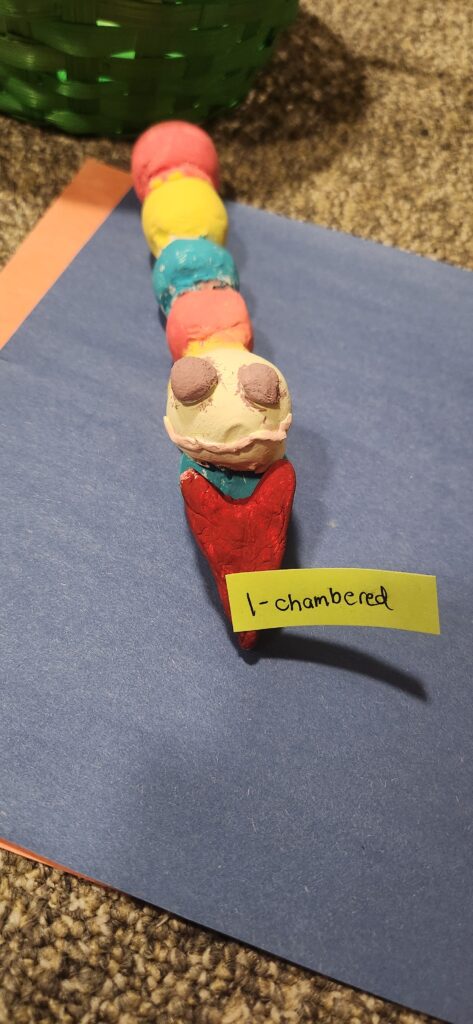
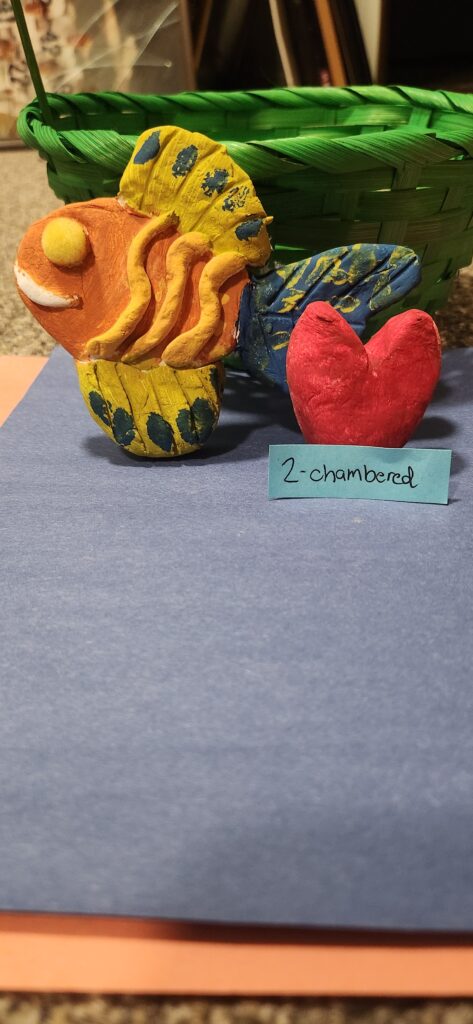
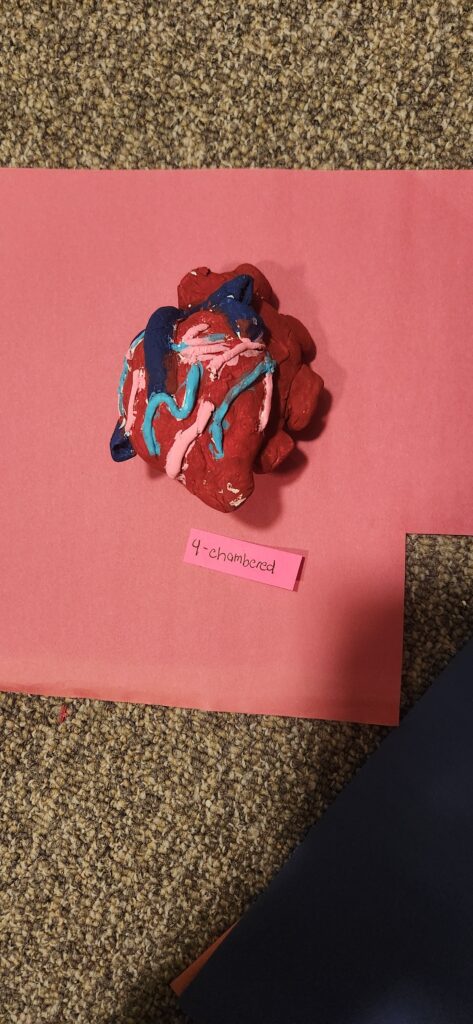
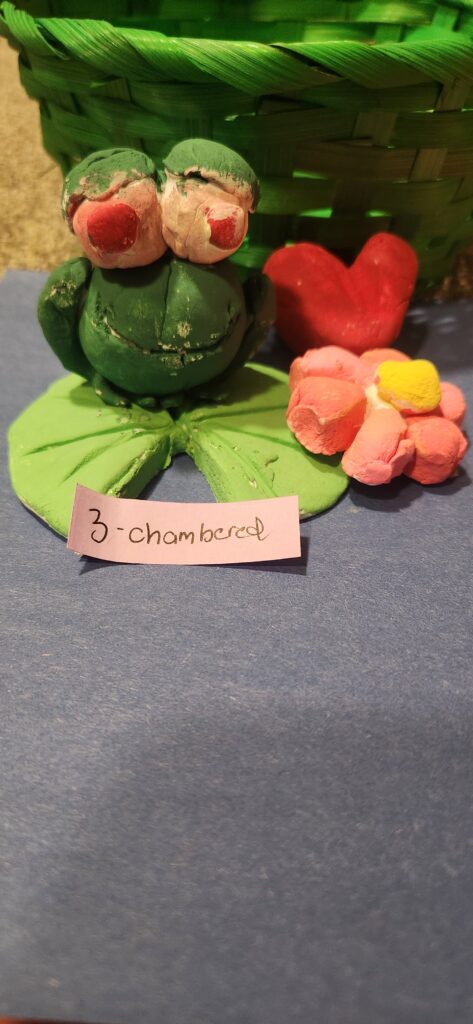
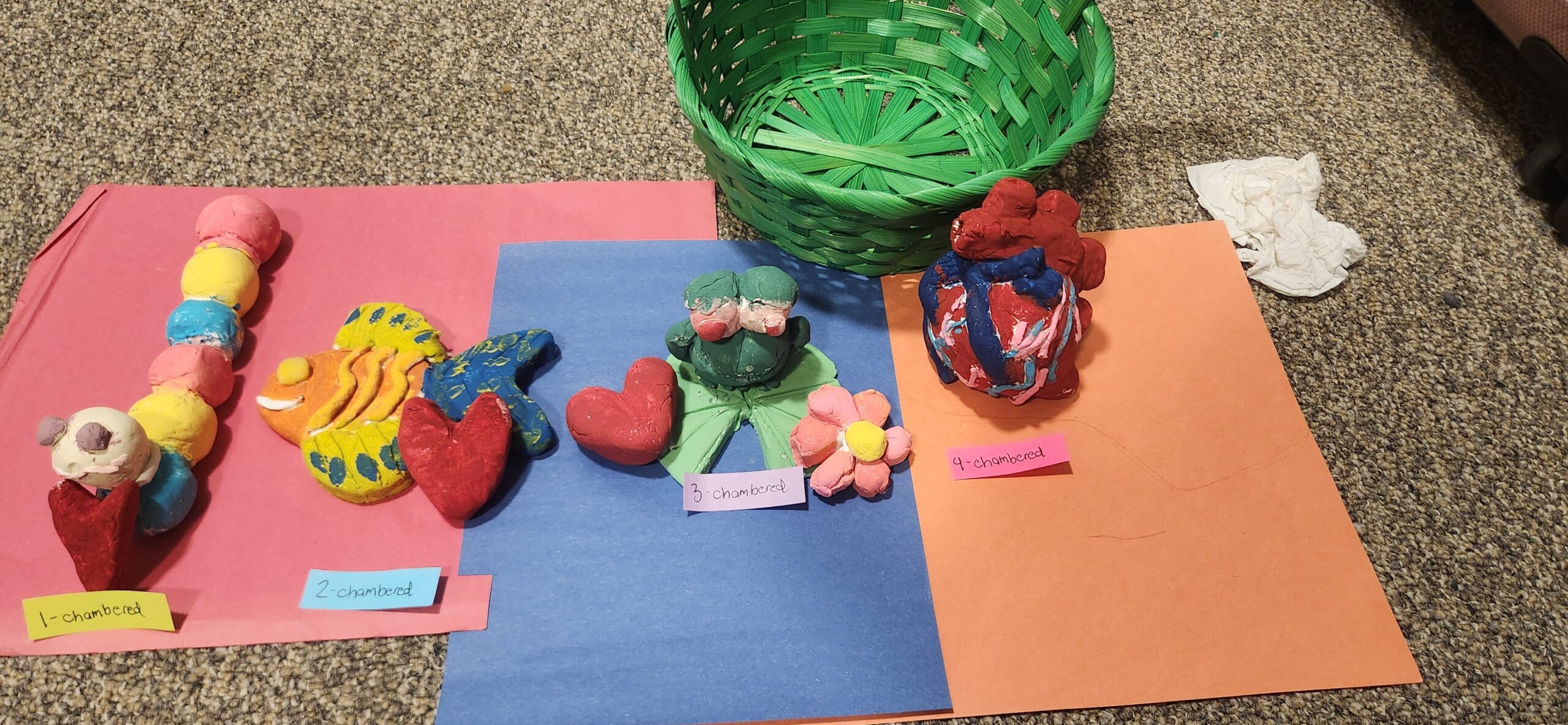
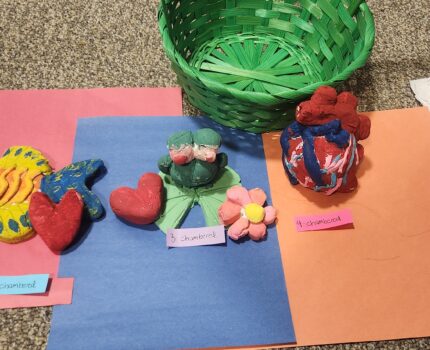
Gabreall’s studies go into not one course objective, but two which dive into revealing depths of the history of heart evolution and the function/structure of the heart. Multiple sources are used to back up their research on the topic. They explain how animals differ and relate, surviving with a one-chambered heart and up to a four-chambered heart. They used colorful clay visual aids which helped put the picture together with the different types of hearts.